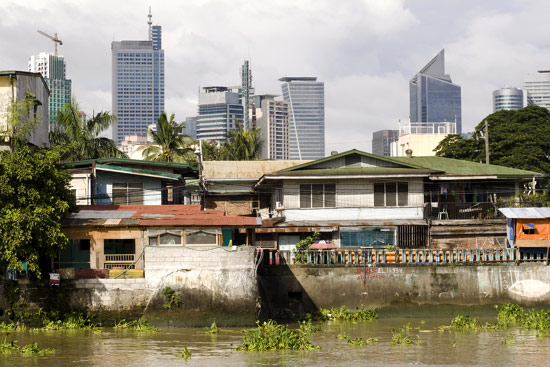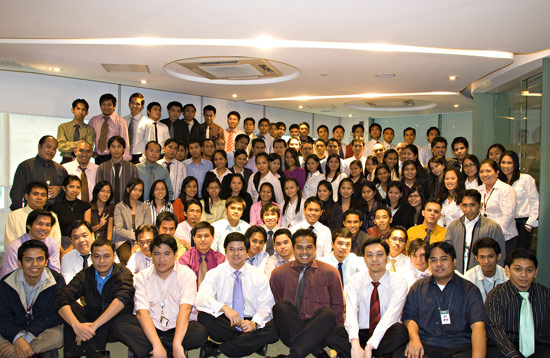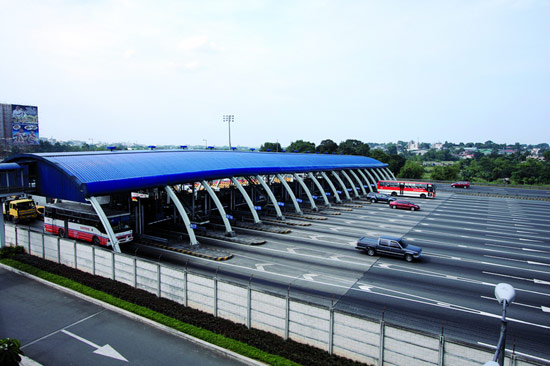Country Snapshot: Business Overview
The Philippines was once one of the wealthiest nations in Asia, yet today it is considered a lower-middle-income economy, facing problems of increasing poverty, crime, and political instability. The nation’s poor infrastructure hampers its ability to diversify various sectors. The nation weathered the global financial crisis of 2008-2009, but it did so mainly because of its limited exposure to troubled securities, a lesser dependence on exports, a growing business outsourcing industry, and large remittances from overseas workers. While under the Aquino administration, which assumed governance in 2010, the country decreased deficits and increased potential for foreign investment, the Philippines did not sidestep all challenges. The country suffers from poor infrastructure and high unemployment. Due to a growing population base, worsening poverty, and tax collection difficulties, the nation must rely on private investment to carry out essential infrastructure projects.
Major Industries
The nation relies on the services sector, which produces over half of the total economic output in the Philippines. Industry accounts for about one-third of GDP and agriculture about 11 percent. Electronics assembly, garments and textiles, pharmaceuticals, food processing, chemicals, wood products, petroleum refining, and fishing represent some of the nation’s major industries. The nation has vast mineral reserves—including copper, gold, chromate, nickel, silver, coal, gypsum, and sulfur—that are largely untapped. Offshore natural gas reserves discovered off Palawan have added to the nation’s coal, hydro, and geothermal reserves. Knowledge process outsourcing (KPO) represents a growth industry.
Trade Overview
Responsible for over half of all exports, electronics products dominate the nation’s export market. Other main exports include transport equipment, petroleum products, garments, coconut oil, and fruits. Japan is the top destination for Filipino exports at 19 percent of the market, followed by the US, China, Singapore, Hong Kong, South Korea, and Thailand.
Imports account for approximately 32 percent of the Philippines’ GDP expenditure. Main imports include electronic components, mineral fuels, iron, textile fabrics, chemicals, and machinery. The US is the nation’s top import partner at 11 percent. China, Japan, South Korea, Singapore, Thailand, Saudi Arabia, Indonesia, and Malaysia are other top import partners.
Foreign Investment
Concerns about law and order, regulatory instability, and inadequate infrastructure stymie foreign investment. Several sectors of the economy restrict foreign investment, and even in industries where investment is allowed, investment is often capped. Before investing, foreigners must register with the government and go through a screening process. Foreign ownership of land is prohibited, and corruption and a lack of transparency make investment difficult.
Transparency (Rule of Law)
The Philippines ranks 85th out of 175 countries in Transparency International’s Corruption Perceptions Index, suggesting corruption is pervasive in the nation. Anti-corruption efforts fall short and public perception has not improved, as the media frequently reports on high-profile corruption cases. The high incidence of organized crime and a weak judicial system contribute to the nation’s rule of law difficulties.
Regulatory Environment (Ease of Doing Business)
The Philippines stands at 95th out of 189 countries in ease of doing business, based on World Bank rankings. Challenges include a burdensome regulatory framework, poor legal infrastructure, and the government’s suppression of private sector development. It takes approximately 35 days to start a business in the Philippines, compared to the average of 38 days in East Asia and the Pacific. Difficulties facing entrepreneurs include registering property, paying taxes, enforcing contracts, and getting credit. The migration of a large portion of the nation’s skilled workers to other advanced countries presents an additional challenge for those conducting business in the Philippines.
Article written for World Trade Press by Nicole Long.
Copyright © 1993—2025 World Trade Press. All rights reserved.

 Philippines
Philippines 


